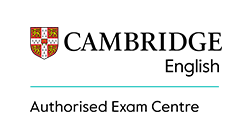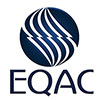A learning difficulty or challenge is a condition that causes a learner to face certain problems when it comes to engaging in the learning process. These challenges can disturb a student’s ability to develop organisational skills, observe mathematical difficulties, and suffer from low memorisation capacities. Typically, these learners take more time to complete their assignments, comprehend general topics, and tend to require special attention and support. Previously, students witnessing these challenges were termed to suffer from learning disabilities that implied that they were less able, when compared to their other peers.
Nevertheless, 21st century learning disabilities courses claim to term these as learning differences, meaning that the learners simply learn in a different way from others because their brains work differently. It is worth noting that there are a range of learning challenges, and it is rare for two individuals to possess learning concerns with the same characteristics.
Yet, there are five main types of learning challenges that have been discussed in this article, and how to identify the types of learning challenges.
Dyslexia: Dyslexia is a very commonly occurring learning challenge that numerous learners observe in their early years. This particular challenge affects the learners’ ability to break words down into their component parts. This can lead to spelling and writing difficulties as the learners struggle to grasp how particular letters or words are supposed to sound or be written. Furthermore, decoding reading is also difficult because as the learner struggles to understand the letters, they take time to club them together and figure out the word formed by the letters. That said, reading can be quite stressful and draining for dyslexic learners. Some common indicators of dyslexia tends to involve problems in reading out loud, inconsistent spelling, a poor grip on phonics, losing one’s place on a page, writing reversed letters, and other reading and writing concerns. As a teacher, identifying these signs is important for one to figure out if the learner is potentially dyslexic, and then render support accordingly.
Attention difficulties: Attention deficit disorders (ADD) and attention deficit hyperactivity disorder (ADHD) is normally characterised as the learner’s inability to retain their focus on a particular thing for a long time. Put simply, students with learning difficulties suffer from poor concentration levels. Such students are likely to be very fidgety. Likewise, they have low impulse control. Contrarily, students only witnessing ADD do not manifest their lack of concentration. Thus, they can appear to be paying attention, and their actual learning difficulties can go unnoticed. Consequently, this becomes evident when the student is unable to complete their respective assignments, or make proper contributions in classroom discussions. At the same time, looking out for poor organisation skills, lacking focus on extended projects, inability to follow directions, and other impulsive behaviour manifestations can be elements that teachers and parents can consider when identifying ADD or ADHD.
Dysgraphia: Children with dysgraphia suffer from poor writing abilities, and tends to produce illegible text that may not always make sense. In fact, students with this concern take a lot of time to complete a basic writing task as they really struggle with word formation and sentence structures. As it happens, the idea of writing appears stressful to them. In addition to these, staying in margins, aptly using the upper and lower cases, and correctly using punctuations may also be a difficulty for the learners. Observing these signals can play a crucial role in identifying this particular learning challenge in a learner.
Dyscalculia: Unlike the other two, dyscalculia perturbs a learner’s ability to process numbers. Students with this learning challenge tend to avoid maths because they struggle to solve simple maths problems, including something as basic as counting. Getting steps in the right order, and reversing the numbers is another common indicator of dyscalculia.
Dyspraxia: This is a motor skills difficulty and interferes with a learner’s muscle coordination and movement, including hand movements. This can subsequently affect one’s writing ability. Besides, learners with dyspraxia are likely to walk with a funny gait, struggle to use a paint brush, play a musical instrument, or participate in any sports activity. Children with this condition also take more time to complete their assignments.
These aforementioned points describe the five main types of learning challenges that are usually thoroughly covered in 21st-century Learning Disabilities Courses. Nonetheless, just knowledge of these learning challenges is not adequate because the teachers also need to know how to identify the types of learning challenges. That said, teachers and parents need to be closely aware of the different signs associated with each disability, and look out for those in their students. In some cases, the learners may be suffering from more than one challenge, and thus closely observing their actions and issues, and linking them with the indicators of each disability can be useful.
Written By : Shivangi Chakraborty











